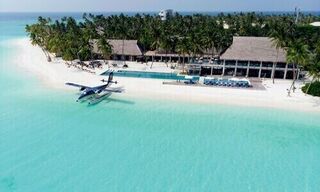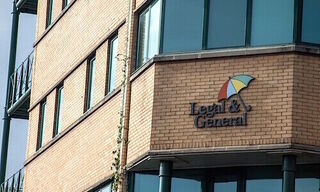While the sanctions net is ensnaring oligarchs' assets in Italy and France, it doesn't appear to be as tight around some of the super-rich close to the Kremlin.
In the multitude of headlines on the siezed superyachts of sanctioned oligarchs, the latest involves «Sailing Yacht A», a 143 meter long sailing ship that looks right out of a James Bond film.
The three masted sailing ship valued at around 530 million euros ($581 million), purported to be owned by Russian coal magnate Andrei Melnichenko, was impounded last week in Trieste by Italy's financial police.
Melnichenko who resides in St. Moritz, Switzerland, joined 13 other Russian oligarchs on the EU sanctions list. He is the main owner of coal company Suek, and the fertilizer business Eurochem, both of which dropped him from their boards in the wake of sanctions.
Uralchem ECO Dimitri Mazepin was also recently added to the list, costing son Nikita Mazepin his seat with the U.S. Formula One team Haas.
700 Million Siezed
To date, seizures by the Italian authorities amount to over 700 million euros, according to Finance Minister Daniele Franco.
The yacht «Lena» owned by Gennady Timchenko, considered a long-time acquaintance and confident to Vladimir Putin, was seized near San Remo, Italy. Authorities say the yacht is worth around 50 million euros, a fraction of «Sailing Yacht A», although the lower price isn't likely to ease the pain of the seizure.
Imperia, a port city on the Ligurian coast also got into the act, impounding the 65 million euro «Lady M» belonging to Alexei Mordashov, a major shareholder in TUI.
Landlocked Assets
It's not just floating palaces that are being targeted, authorities are also going after real estate. A villa in Sardinia belonging to Alisher Usmanov was seized, as was the lake Como villa of Russian TV presenter Vladimir Soloviev.
France has been active as well, seizing four cargo ships along with the yacht «Amore Vero» owned by Igor Sechin, who is the head of state-owned Rosneft.
Hesitation
Still, it isn't always clear who will be sanctioned and how. For example, Chelsea football club owner Roman Abramovich was sanctioned, but only after some initial hesitation. A seemingly high threshold was established for a man who invested so much money into the storied team. Moreover, he also has large related real estate holdings. For now, though, the club cannot be sold.
Our Oligarch
In looking at the current situation, a quote by Franklin D. Roosevelt comes to mind. Talking about the dictator of Nicaragua at the time, Anastasio Somoza, the former U.S. President reportedly said «He may be a son of a bitch, but he's our son of a bitch.»
Oleg Deripaska has been on the U.S. sanctions list since 2018 and is now on the U.K.'s, but remains conspicuously absent from the EU sanctions list. This is causing a stir, particularly in Germany and Austria. One EU member state apparently balked at adding him to the list. Deripaska's automotive and defense company Gaz is a supplier to Volkswagen. He is also a shareholder in Austria's Strabag Group.
Confusion
With often convoluted and complex ownership structures, it can be difficult to properly identify the ultimate beneficial owner of an asset. Then there are jurisdictional issues between state and federal authorities.
One example is the conflicting reports on whether the yacht «Dilbar», owned by Alisher Usmanov, has actually been seized in Hamburg where it is undergoing overhaul.
Swiss Connections
Another oligarch on the U.S. sanctions list is Viktor Vekselberg, which is causing issues with the holdings he has in Swiss companies Sulzer, Oerlikon and Swiss Steel. U.S. authorities have recently sanctioned a yacht and aircraft worth around $180 million.
Swiss authorities have yet to say whether any assets have been blocked as part of the sanctions adopted by the EU.
Nor have major banks UBS and Credit Suisse provided detailed information on their business relationships with sanctioned individuals. The only information made available recently concerned credit risks.
UBS identified a small number of global wealth management clients, accounting for less than $10 million in outstanding loans. Credit Suisse was even vaguer in citing minimal total credit exposure.




























